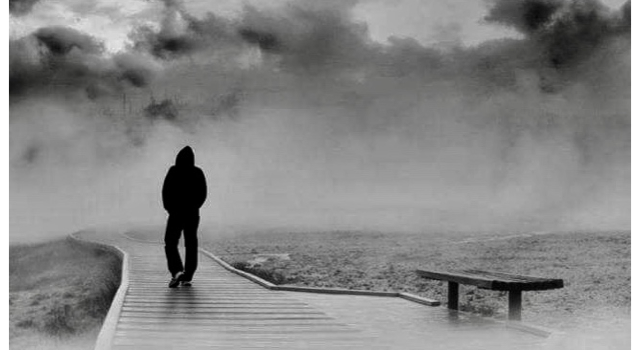The BBC has been accused by more than 100 of its staff of giving Israel…

American Politicians Scrambled To Justify What They Had Done.
When Franklin D. Roosevelt died in 1945, his Vice-President, Harry Truman, was suddenly elevated to the American Presidency.
A few hours later, the War Secretary, Henry L. Stimson, took him aside to tell him about a secret government programme to create ‘an explosive of almost unbelievable power’.
This programme, called the Manhattan Project, sought to harness ‘the basic power of the universe’, to create a bomb capable of levelling an entire city in a single explosion.
In the months leading up to the end of the Second World War, it seems that factions within the Japanese imperial government were doing their best to surrender, while elements within the Allied governments – determined to use the atom bomb come what may – were doing their best to ignore them.
Children are making their way to school, ordinary shopkeepers and civil servants go about their business, oblivious to their impending doom.
In Nagasaki a myth was circulating that the Allies had deliberately avoided bombing them because of the large Christian population there.
The atomic flash, vast shockwaves and the atomic wind that blew away everything in its path.
Melted bodies fused to their bicycles, rivers filled with corpses, and rubble stretching into the distance.
The greasy, black rain that began to fall on Hiroshima shortly afterwards.
They thought it was gasoline, some even tasted it, unaware of its radioactive toxicity.
The hypocrisy and heartlessness that came afterwards, in particular the American medical missions to Japan which seemed more intent on gathering data than helping those suffering from radiation sickness.
American politicians, Truman included, scrambled to justify what they had done.
( Keith Lowe, with contents from a book written by Paul Ham )
Most Of The Dead Were Civilians.
Within the first two to four months of the bombings, the acute effects killed 90,000–166,000 people in Hiroshima and 60,000–80,000 in Nagasaki, with roughly half of the deaths in each city occurring on the first day.
The Hiroshima prefecture health department estimated that, of the people who died on the day of the explosion, 60% died from flash or flame burns, 30% from falling debris and 10% from other causes.
During the following months, large numbers died from the effect of burns, radiation sickness, and other injuries, compounded by illness.
In a U.S. estimate of the total immediate and short term cause of death, 15–20% died from radiation sickness, 20–30% from burns, and 50–60% from other injuries, compounded by illness.
In both cities, most of the dead were civilians, although Hiroshima had a sizeable garrison.
( Wikipedia )
200,000 POWs Saved From Execution.
When the atom bombs were dropped over Hiroshima and Nagasaki in August 1945, no one could have been more relieved than the 200,000 or more allied POWs held captive by the Japanese.
Within a few days every one of them, including women and children, was due to be executed under a characteristically barbaric Japanese policy called ‘Kill-All’.
After the war, former POWs of the Japanese had hospitalisation rates up to eight times higher than POWs held by the Germans, with eight out of ten suffering severe psychiatric problems.
Tormented by lice, fleas and rats, fed on rotten food, constantly beaten and worked like slaves, most prisoners emerged from their captivity broken men.
The Non-Humans That Suffered And Died.
No one speaks of the millions of animals, innocent victims of the atrocity just like the innocent civilians, who suffered unimaginable pain before they died.
The domestic pets, farm animals and wildlife animals, and, of course, the many, many birds.
The First Successful Use Of Massed Air Power In War.
The first time aircraft really proved their worth in support of forces on the ground was during the German invasion of Poland in September 1939.
The Polish Air Force mustered only 397 aircraft against 1,323 German bombers, fighters and dive-bombers.
The Polish Air Force gave a good account of itself against overwhelming odds.
It was during the Polish counter-attack at the Battle of Bzura in the middle of September that German aircraft really demonstrated the advantage of battlefield air power, repeatedly bombing and strafing Polish forces until the Poles were forced to retreat.
Nevertheless, the Germans lost 285 aircraft in the first successful use of massed air power in war.
( Richard Overy )
The Reign Of Elizabeth 1.
Twelve years after Elizabeth’s accession, Pope Pius V excommunicated the English Queen as a heretic and absolved English Catholics from fidelity to their Monarch.
Effectively, it was a declaration of war, obliging Elizabeth’s Ministers to embark on a 30-year campaign of espionage in an attempt to protect not only the fragile consensus of the Protestant settlement, but the very survival of England as a free nation, dependent as it was on the life of an unmarried woman who refused to name a successor.
Proof of fidelity to the Crown, even for Catholics loyal to the Queen, became increasingly problematic.
With the 1571 Treasons Act and its successor, the 1585 Act for the Queen’s Surety, described as ‘one of the most extraordinary and menacing laws ever passed by an English parliament’, Catholics were backed into a corner whereby profession of their faith was itself treasonable.
Many responded by fleeing to the Catholic training colleges established on the Continent and by preparing for a holy war.
During Elizabeth’s reign, 471 priests were captured in England, of whom 116 were executed and 294 imprisoned.
( Lisa Hilton, 06.01.2013 )
The Gulag’s Legacy.
The word Gulag is an acronym.
In Russian it stands for the Main Administration of Corrective Labour Camps and Colonies.
Established by Stalin in 1930, the Gulag began as a means of isolating ‘counter-revolutionary elements’ in remote places such as the Far North and Siberia.
But it soon developed into a vast archipelago of labour camps and colonies, construction sites, factories, logging camps and mines – a slave economy that cast its dark shadow over the Soviet Union.
The Gulag colonised the remote Arctic zones where so many of the Soviet Union’s economic resources (diamonds, gold, platinum and nickel, coal and timber) were located, but where nobody would freely go.
The population of the Gulag’s camps and settlements varied between two and five million prisoners.
Sentences varied between three and 25 years.
By the time of Stalin’s death in 1953, 20 million people, mostly men, had endured the terrible conditions of the Gulag’s labour camps.
At least two million people died from maltreatment.
The highest death rates were during the war, when prisoners were worked harder and food rations reduced to a minimum.
One in every four prisoners died.
Prisoners lived in cramped barracks.
They worked 12-hour shifts.
The rations they received were inadequate to survive long periods of hard labour.
Many prisoners lost all contact with the outside world.
The First Bomb Dropped In Battle.
The first time that explosives were dropped in battle from an aeroplane was during the Italian – Turkish war in Libya.
On the morning of November 1, 1911 Lieutenant Giulio Gavotti flew an Austrian-designed Taube aircraft over the Taguira Oasis on the Turkish front.
Extracting the pins with his teeth, he threw four 4.5lb grenades from about 300ft onto the troops below.
The grenades managed to achieve very little but the incident caused an international enquiry and provoked protests from the Turks about the indiscriminate nature of the attack.
The first true bomb, with fins and a detonator, was designed by a Bulgarian soldier, Simeon Petrov, in 1912.
In the Balkan War against Turkey that autumn, two bombs were dropped on a Turkish railway station from an Albatros aircraft.
This was the first bomber aircraft and the first true bombs, whose design became standard during World War 1.
( Richard Overy )
The First Strategic Bombing.
On May 18, 1918, the British government approved a plan to set up an independent bombing force to attack targets in Germany and on June 5 the Independent Air Force was formally established.
This was to be the first air unit set up to carry out what came to be called ‘strategic bombing’ – long range attacks on military and industrial targets in the enemy homeland.
The first attacks were flown in September 1918 against cities in western Germany.
Great plans were set up to build a fleet of 48 squadrons of bombers but the November 11 Armistice brought the war to an end, suspending the first true strategic bombing campaign.
Only 540 tons of bombs were dropped in 1918, most of them on German railways.
( Richard Overy )



This Post Has 0 Comments